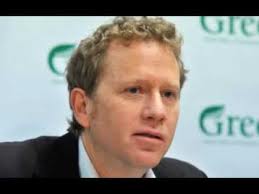 In a comment on Tom Bennion’s recent post on the water crisis in Tuvalu and Tokelau Gareth drew attention to an article in the Economist which sounded similar themes. Small island states are well aware of the danger in which they stand and of how grudging any help is likely to prove:
In a comment on Tom Bennion’s recent post on the water crisis in Tuvalu and Tokelau Gareth drew attention to an article in the Economist which sounded similar themes. Small island states are well aware of the danger in which they stand and of how grudging any help is likely to prove:
Australia has turned down Tuvalu’s request for an emergency migration programme that would resettle the islanders. Even a €90m ($119m) aid package to tackle regional climate change pledged earlier this year by the European Union has done little to tamp down its fears.
The leaders of countries as far afield as Barbados and Grenada joined Tuvalu in raising the alarm over the issue in a series of impassioned speeches to the United Nations General Assembly last month. Ralph Gonsalves, the prime minister of Saint Vincent and the Grenadines, laid the blame for the current debacle squarely at the feet of developed economies.
He was “baffled” he said, “by the intransigence of major emitters and developed nations that refuse to shoulder the burden for arresting climate changes that are linked to the excesses of their own wasteful policies.” As it happens, the first states to experience the effects of climate change as an existential threat are among the world’s smallest, most isolated and least powerful.
What particularly caught my attention in the Economist article was a link back to a past story published in the magazine in 1997. It was revealing both of how long the island states have been anxious and of how summarily those concerns have been treated by the more powerful.
Continue reading “The long history of hot air and inaction”
Like this:
Like Loading...
 With the passage of the Australian “Clean Energy Future” legislation, Simon Johnson (aka Mr February) makes another trans-tasman emissions trading scheme comparison.
With the passage of the Australian “Clean Energy Future” legislation, Simon Johnson (aka Mr February) makes another trans-tasman emissions trading scheme comparison.
 In a comment on Tom Bennion’s recent
In a comment on Tom Bennion’s recent  Last week, (29 September 2011 to be precise),
Last week, (29 September 2011 to be precise),  The immediate
The immediate